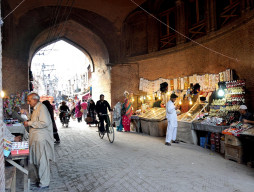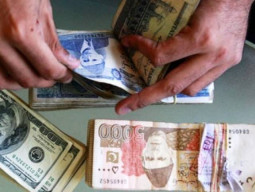
There is no doubt that Pakistan has a rich cultural and archaeological heritage spanning from the Paleolithic (Old Stone Age) down to the present time.
The oldest remains of human activity were found in the Soan Valley of the Potohar region. The antiquity of these relics of the Stone Age, according to historians, is estimated to be two million years. Dating from 7,000 BCE to 2,000 BCE, the Mehrgarh area in Balochistan is considered as one of the most important Neolithic archaeological sites, which was amongst the first culture in the world to establish agriculture and livestock. Renowned for being the most well-developed early urban civilisations in human history are Harappa in Punjab and Mohenjo Daro in Sindh of the Indus Valley Civilization. With its art and architecture, the Gandhara region in northern Pakistan flourished from the time of the Persian conquest (600 BC to 500 AD) to the invasion of the White Huns.
But in the midst of all this historical richness, there is criminal neglect from authorities. Unfortunately, the Department of Archaeology and Museums is largely a defunct body, which is quite a shame, considering that it oversees some of the most important archeological sites in the world. The present crumbling state of most monuments clearly indicates a lack of interest by the government.
Major excavations carried out on Pakistan are by either some of the universities (Khairpur, Karachi, Peshawar, Hazara) or are some foreign projects under licences provided by provincial authorities. Excavations carried out by the archaeological authorities run by the government are rare nowadays.
In many culturally rich countries across the world, archeological tourism is being promoted for economic development. This contributes immensely to the gross domestic product. The UN World Tourism Organisation estimates that around 40 per cent of international tourists are cultural tourists. This shows how cultural and archaeological heritage may play an effective role to uplift the tourism industry in Swat — and the rest of Pakistan.
Nations pursue tourism because it is such a valuable source of foreign exchange but the tide goes the other way in Pakistan. Pakistan’s archaeological sites face threats from humans and environmental factors. The sites which entail global historical importance are lying deserted where one can see no tourist at all.
According to the tourism experts, if visits to the Buddhist sites of the Gandhara civilisation were made accessible by lifting the condition of no objections certificate from the interior ministry for foreign visitors and special tour packages were designed, only visitors from the Southeast Asian countries are enough to streamline the tourism industry. We can only imagine the immense scope!
Published in The Express Tribune, October 3rd, 2014.
COMMENTS (2)
Comments are moderated and generally will be posted if they are on-topic and not abusive.
For more information, please see our Comments FAQ
















































"Neglected Archeological Sites" tweaked my attention. But the contents of the article are not relevant to the caption. What was the author wanting to say? I couldn't figure out how this relates to the neglect?